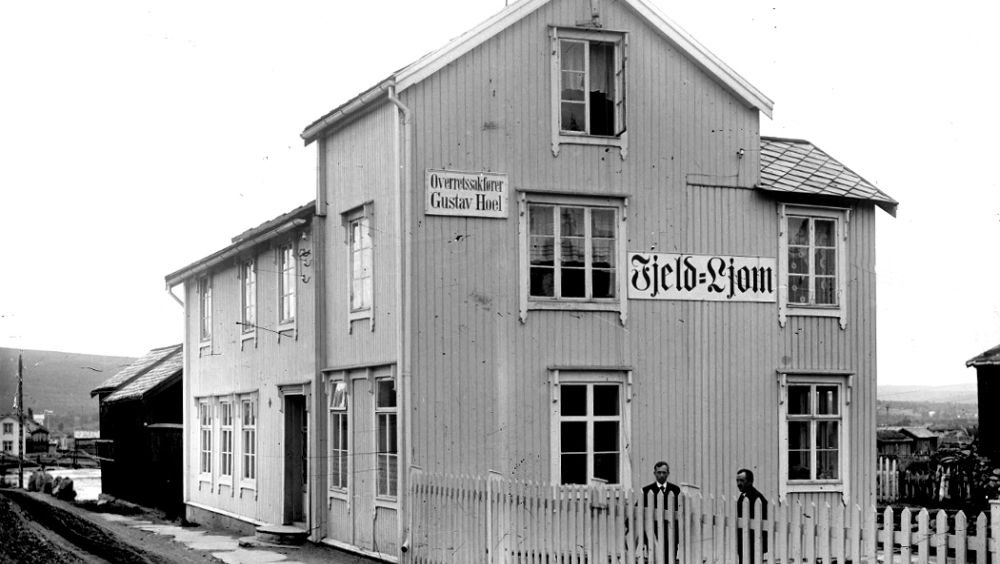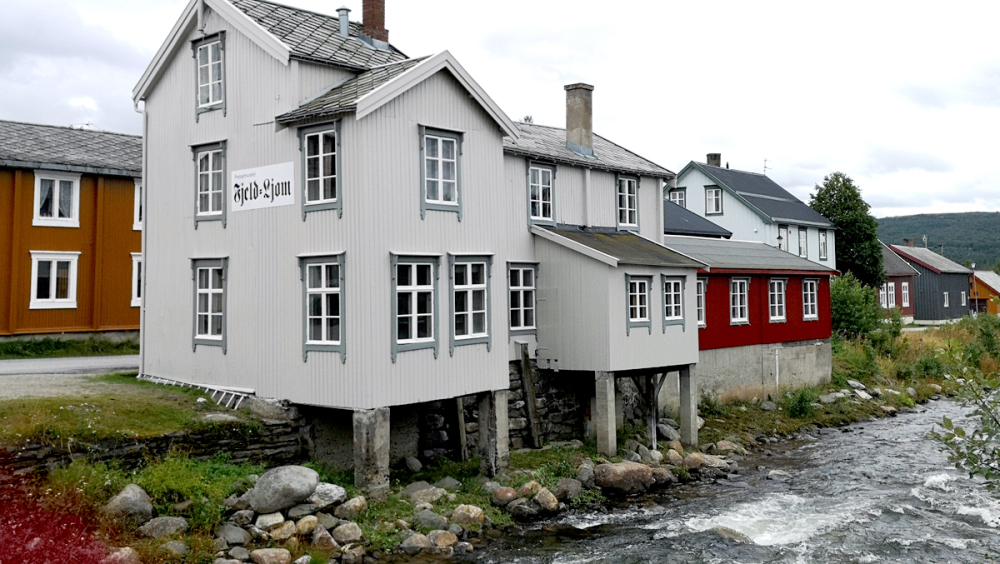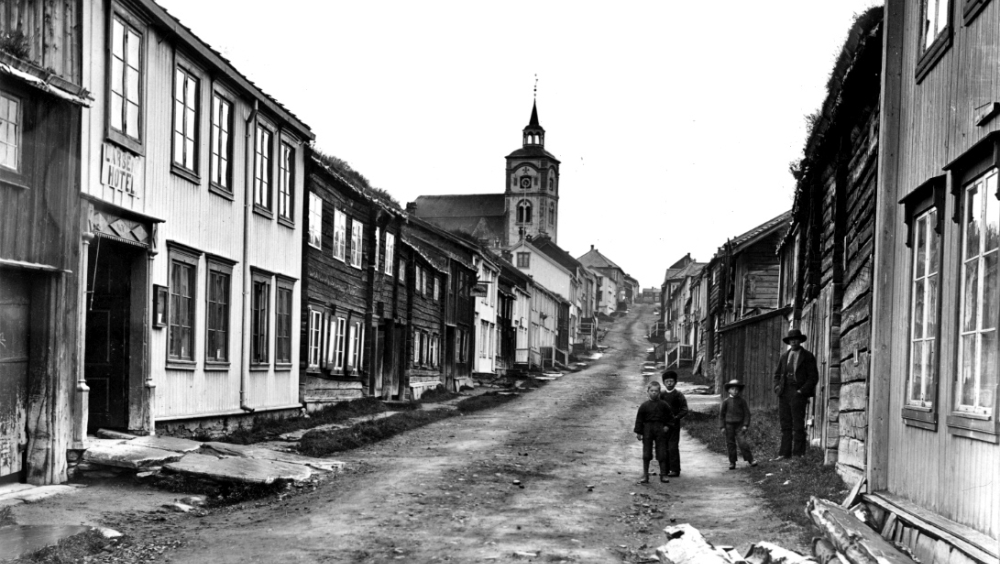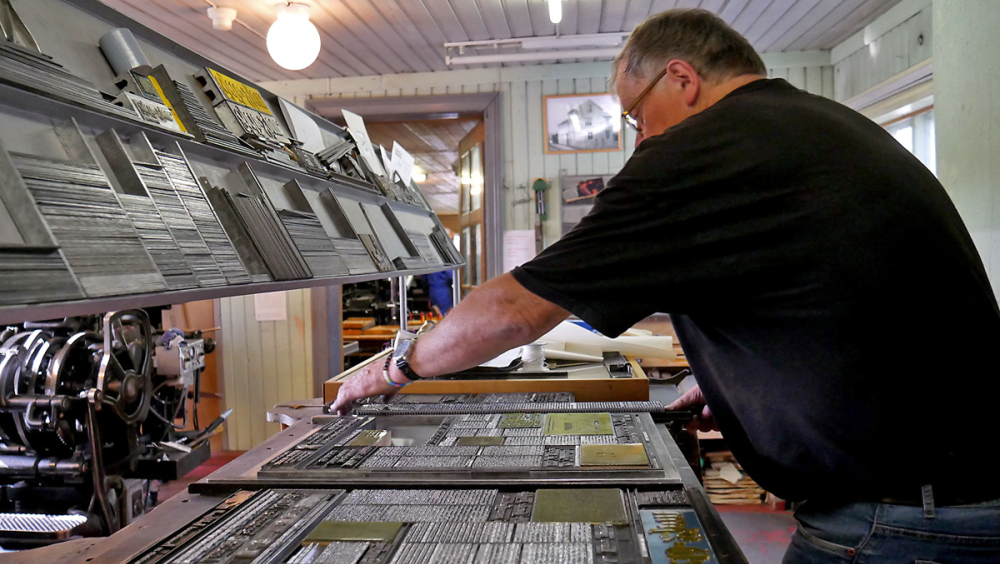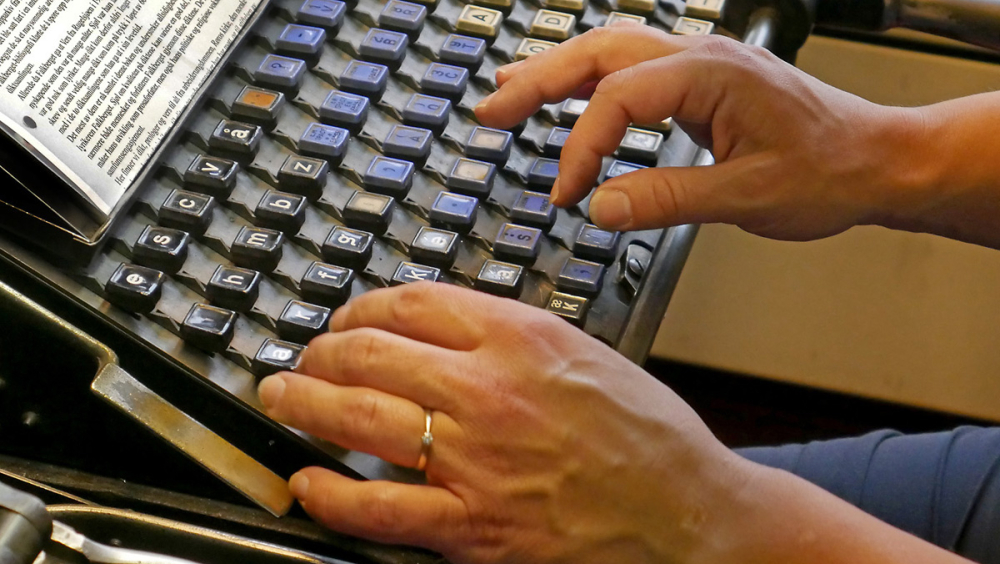The living Press History
The newspaper man Olaf O. Berg bought in 1891 a building located close to the river running through the mining town of Røros, Norway. The newspaper “Fjeld-Ljom” was produced and published from this very same house until 1975, when modern production techniques replaced the old lead-based machinery, and the editorial staff moved to new offices.
More or less because of a coincidence, the old equipment was left untouched. People from around the country with interest in newspaper and printing history worked eagerly to secure the old newspaper house as a museum, and this came into a reality in 1986. In 1991 volunteer friends of the museum established an association, that took on the responsibility of keeping the house as a living museum. The intact production system in the museum is pretty much the same as it was during the last period of lead-based production of three editions a week, up until 1975.
The Press Museum “Fjeld-Ljom” is one of the few, if not the only newspaper house in Europe with a complete working lead-based production line, located in the historical mining town of Røros, one of the UNESCO World Heritage sites in Norway.
In the year 1868 a man with the name Andreas Halvorsen came walking into the mining town Røros, in the eastern part of Norway. This might have been one of the early spring days of that year, when the winter still kept the mountain plateau in its cold grip, and the sulphur smoke from the copper smelting house, as always, gave a distinct smell to the frosty air in the narrow streets between the dark wooden houses. Røros is now one of UNESCO’s World Heritage sites and is very well preserved.
Halvorsen was in his fifties, and according to the anecdote about him, he had walked a good part of the nearly 400 kilometres from the Norwegian capital Oslo (at that time named Christiania) north to Røros. The tale about him establishing the first printery in Røros claims that he travelled here with his family and all their belongings on a small wagon that they pulled themselves, as Halvorsen most likely could not afford to have a horse to draw the wagon. The wagon probably also contained printing equipment, ink and paper needed to start his business. This was nine years before the railway in 1877 made its way from Christiania to Trondhjem (now Oslo and Trondheim). The railway line is called “Rørosbanen” and is named after the mining town of Røros.
As the governmental rules stated at that time, Halvorsen had been given a royal permission to start a small printing company in Røros. He was already an experienced craftsman, he had been running similar companies in Christiania, Christianssand and Horten in the southern part of Norway. In his application for a grant to start a printing company in Røros, he wrote that no such company existed in Røros or the nearby area.
When Halvorsen started the printery in Røros, the main bulk of the work was for the mining company, official services and for private people. But already the same year, on the 6. of August, to be precise, he launched his own newspaper, “Fjeldposten”, (“The Mountain Newspaper”), the very first in Røros.
The newspaper did not have any huge circulation, probably just about 150 copies once a week, and was too expensive to buy for most people, among them the workers in this industrial town. “Fjeldposten” did not have much of a resemblance to local newspapers of today, with only very few and rather short local news stories. Most of the paper was filled with advertisements and national news from governmental sources.
Halvorsen died in 1871, but his family kept on running the business and the newspaper, and in 1884 they hired Olaf O. Berg to lead the company, as a printer. With Berg managing the printery we can sense the beginning of the modern newspaper history in Røros, leading up to what still is visible in the museum, in the same house that Berg bought in 1891, now “Pressemuseet Fjeld-Ljom” (“The Press Museum”), named after Berg’s own newspaper.
Berg left “Fjeldposten” and started his newspaper, “Fjeld-Ljom”, in 1886. The name of the paper was from a poem and can be translated into something like “The distinct Sound of the Mountain”. Later on, in 1929, the name was changed to the more linguistic and modern “Fjell-Ljom”.
At the age of 31, in a time when Norway went through a lot of changes towards a more modern democracy, Berg was a convinced radical and appealed through his paper to the young people he saw as the country’s future. He was not impressed with the old establishment and the moderate and conservative politicians that outnumbered the radical movement at that time. He urged young people to “sweep away” the old thoughts and let the new enlightenment shine. Berg also sympathized with the printers’ trade union and accepted to supply travelling print workers with funds on behalf of their national organization.
The local conservatives were not satisfied with Bergs radical statements in “Fjell-Ljom”, so they started their own newspaper, called “Dovre”, after a national symbol used in the Norwegian Constitution.
Røros had a rich newspaper history during the first years of the 20th century, with at the most five different publications, among them one written for the Sami people, called “Waren Sardne”. The name is Sami for “Message from the mountain”. Among the newspaper publishers were also editors that were driving forces in developing the local society. We must remember that this was a time when a lot of changes came into Røros and similar places in Norway. Electricity became common, the railway brought goods to and from the area, and even tourists started to show up. The mining company, “Røros Kobberverk”, had a time of prosperity, and gave work and income to a lot of people in the town and the area around. Commerce developed and people started to take more interest in politics and a living democracy. The right to vote for all people, including women, was given in 1913. All this led to growing interest in newspaper reading.
By the end of the First World War three newspapers were solidly established in Røros. “Fjell-Ljom”, still at bit radical, even though editor Berg had left Røros and was replaced with more moderate editors, the conservative “Dovre” and the new social democratic newspaper, given the name “Arbeidets Rett” (“Right to Work”).
Røros had at this time three printeries, outnumbering what was common in a place of this size. The explanation might be that Røros was an industrial town, with workers used to work with complex machines and mechanics in the mining industry. People with skills needed also to maintain and repair machines in a printery.
Arbeidets Rett is still published three times a week in Røros, while “Fjell-Ljom” now is a weekly publication. Both Røros newspapers has developed into the modern age, with an online newspaper that is updated on a daily basis.
Already in the 1920’s the production equipment in the Røros newspapers were relatively modern and up to date for its time, with type setting and broadsheet printing machines driven by electricity. This lead-based high-relief production continued throughout most of the century, until the 1970’s, when modern technology gradually replaced the old machinery. Paper pasteup, offset printing and later digital computers completely replaced the old analogue technology, now known by enthusiasts as “letterpress”.
More or less because of a coincidence, the old equipment in the newspaper house of “Fjell-Ljom” was left untouched, when new production techniques replaced the old typesetting machines and the printing machine.
People from around the country with interest in newspaper and printing history worked during the late 1970’s and the 1980’s to secure the old newspaper house as a newspaper museum, and this came into a reality in 1986. In 1991 volunteer friends of the museum established an association, that took on the responsibility of keeping the house as a living museum, with working lead-based typesetting machinery and high relief printing still capable of producing newspapers the old way. The intact production system in the newspaper is pretty much the same as it was during the last period of lead-based production of three editions a week, up until 1975.
The house itself, and the old originally machinery from the “Fjell-Ljom” production, is owned by the local museum, “Rørosmuseet”. Friends of the Press Museum has over the last years collected more letterpress equipment from all over Norway and cooperate closely with the museum owner in taking care of the house, the machinery and the cultural heritage. The museum has now, all together, six type setting machines, both Linotype and Intertype, covering printing history throughout most of the 20th century. The collection also consists of around 70 cases of types, a Typograph typesetting machine, a Ludlow title setter in working order, the Italian Nebiolo printing machine and several smaller printing machines.
Three times a year a group of volunteer workers meet in Røros to maintain the equipment and produce text, titles and pictures for the yearly museum newspaper, printed in September.
The museum volunteers are now also working with a plan for bringing the newspaper building, now housing the museum, back to original condition. We want to re-establish the editorial and commercial offices, with typewriters, analogue cameras and darkroom facilities, as they were up until 1975, when the staff of the newspaper “Fjell-Ljom” left the building.
The museum in the very same building has taken back the old name, “Fjeld-Ljom”, to both show the connection and clarify the difference between the still existing newspaper and the museum.
The most important part of the work that the museum friend’s association do, is to take responsibility for maintenance of the old machinery, keeping it in working order for production of the yearly museum newspaper, and to be able to show the public, especially younger people how newspapers were produced in the old days. Since lead-based production went out of fashion in the 1970’s, workers mastering the old techniques are getting older and fewer. With that in mind we will launch a project that has a goal to catch interest and educate more younger people in the skills of maintaining and handling the machines.
Our optimism in this project is also related to the fact that we see a growing interest for old printing techniques among younger people. At Oslo National Academy of the Arts PhD in Graphic Art, Ane Thon Knutsen, gives inspiration from our Press Museum to her students, who have access to their own letterpress printing facility. The same with teacher Marit Brandsnes at “Arbeiderbevegelsens Folkehøyskole (” People’s college”), where she teaches students in graphic design, using letterpress techniques to teach the history and basics of typography and printing. Both Ane and Marit are members of the volunteer force at the Press Museum, and we would very much like to recruit and educate more like them, securing the future of “Fjeld-Ljom” as a living press museum.
The printing technology still visible and working in the Press Museum at Røros, Norway, was common all over Europe through the 20th century. Typesetting and printing machines, as the ones you can experience in “Fjeld-Ljom”, were spread out in large numbers. A few of these machines are still in working order, but the Press Museum in Røros is one of the very few, if not the only originally newspaper building in Europe with a complete working lead-based production line, from editor and journalists, through type setting, lay out and page make-up and on to the printing machine, with the ready folded four pages broadsheet newspaper as printed evidence of the machinery working.
Maintenance of the old equipment, ensuring it to be in working order also in the future, is done entirely by the volunteers of “The friends of the Newspaper Museum Fjeld-Ljom” (“Pressemuseet Fjeld-Ljoms Venner”). The work of this association is so far entirely based on private voluntary gifts, without any state- or community fundings. To ensure the museum’s future we are in need of more and younger volunteers, being willing to use some of their time on learning to keep up the maintenance and handling of the old machines. This cannot be taught in ordinary schools; it needs to be passed on from the people that know how to operate and maintain the printery.
Røros, the mining town, is one of the UNESCO World Heritage sites in Norway, and the Press Museum is very much a part of the town’s cultural and labour heritage.
